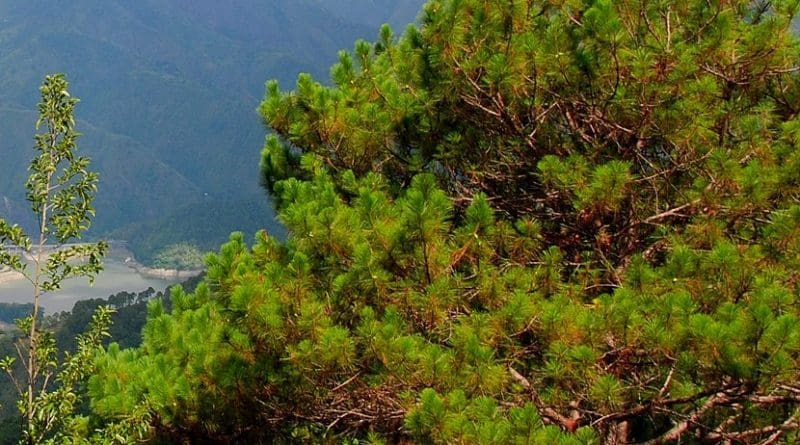Pine Needles, Cordi’s Neglected Sustainable Fuel – OpEd
The Benguet pine tree (Pinus kesiya/insularis) growing areas of the Cordillera region of the Philippines, particularly the provinces of Benguet and Mountain hold the region’s most sustainable source of energy—pine needles.
Sadly,no one is doing anything about it,not even the government. But a local environmental group, the Cordillera Ecological Centre, is designing ways on how the pine needles can be used for cooking fuel.
The region with more than a million hectares, of subtropical pine forests are the largest in the countryth Forest fires are quite common in these areas as pine needles, which are highly inflammable, keep falling off trees from the middle of March till the onset of the rainy season in Julne This has a serious impact on the environment, leading to the loss of flora and fauna.
Millions of metric tonnes (mmt) of pine litter is generated annually in Benguet, Mountain Province Abra, Kalinga, Ifugao and Nueva Vzcaya pine forests . Therefore, even if about 40 per cent of the estimated quantity is taken as collectible quantity, after making sufficient provisions for traditional uses, still much is left available for industrial use.
A Geerman GIZ study found that an proximate analysis of seven different location samples concluded that pine needles contain 12-19 per cent fixed carbon, 1.5-3 per cent ash and 8-30 per cent moisture, which gives them an edge over rice husk and wood biomass. Meanwhile, the ultimate analysis highlighted its advantages as a fuel with carbon content of 50-55 per cent. The other parameters were within acceptable limits, barring sulphur, which exceeded the norm marginally.
Despite high sulphur content, 17.8-20.8 megajoules (MJ) per kg of energy can be obtained from the feedstock of pine needles. An analysis of the producer gas composition shows that it is fit to be used in an internal combustion engine, and has a calorific value of 4-4.5 MJ per Nm3. The efficiency of the demonstration gasifier was nearly 75 per cent, and 20-22 per cent of char was produced with a heating value of 19.5 MJ per kg.
Based on these resources, the state has the potential of producing over 150 MW of energy annually from biomass-based projects of up to 250 kW and briquetting/bio-oil units of up to 2,000 mtpa. They can not only help meet the local energy needs, but can also be an effective means for livelihood/revenue generation.
In India, the Uttarakhand Policy for Energy Generation from Pine Litter and Other Biomass – is applicable to pine litter and other biomass-based power generation and briquetting/bio-oil projects in the state. Its aim is to harness renewable energy resources in the state, enhance private sector and community participation in energy generation, mitigate forest fires caused by pine litter, create avenues for rural employment to prevent migration, and provide decentralised energy supply to the agricultural, commercial and household sectors as well as small-scale industries. The Forest Department and UREDA will act as nodal agencies for the implementation of this policy in the state.
The Philippines stands to lose if it does not tap this endless natural


Dear Dr. Bengwayan;
I am currently enrolled at the Executive Master in Disaster Risk and Crisis Management (EMDRCM) at the Asian Institute of Management (AIM).
I am a businessman based here in Baguio City.
I have been encountering your articles in the numerous case studies I have been doing in compliance to our course.
We are currently preparing a Project Feasibility Study on the Power of the Pine Needle, wherein the pine needle as a source of power, which they have perfected in Uttarakhand, India. I found out that this project can provide physical, ecological, economic and social resilience in the Province of Benguet, since Benguet is a disaster prone area,
May I know your insights on this, Sir? Thank you